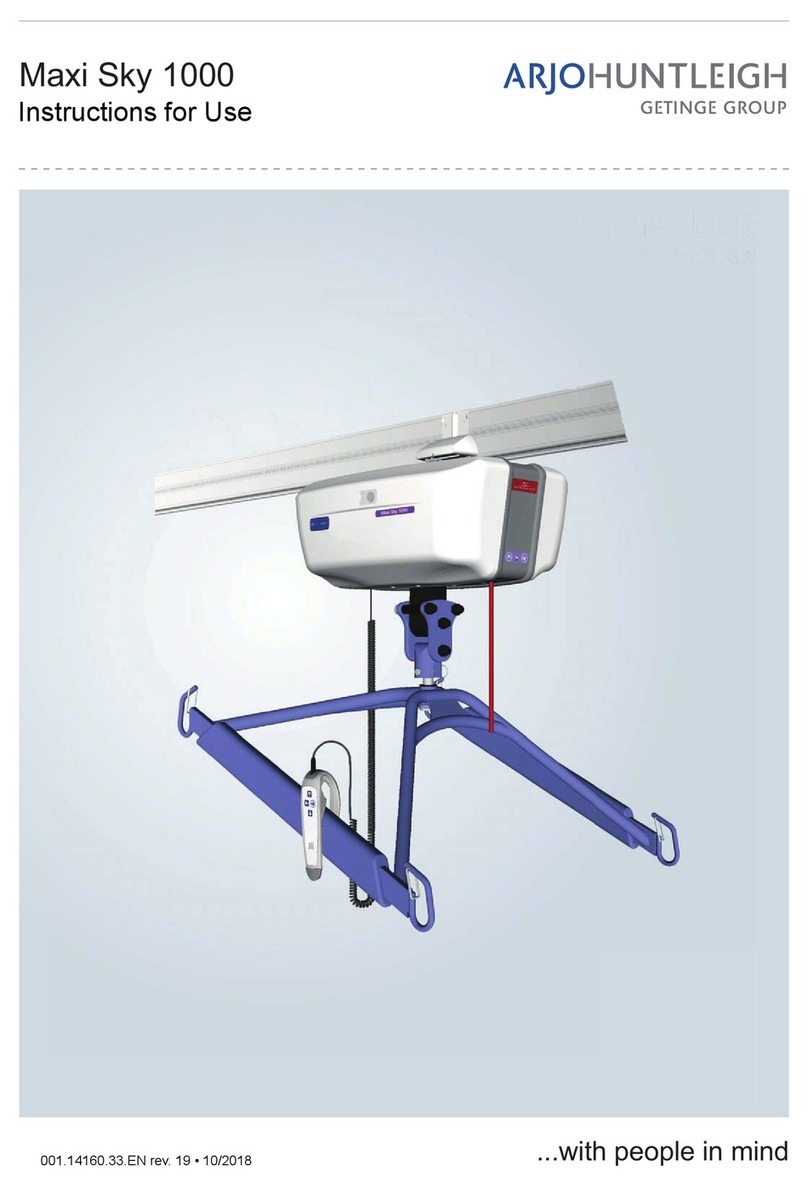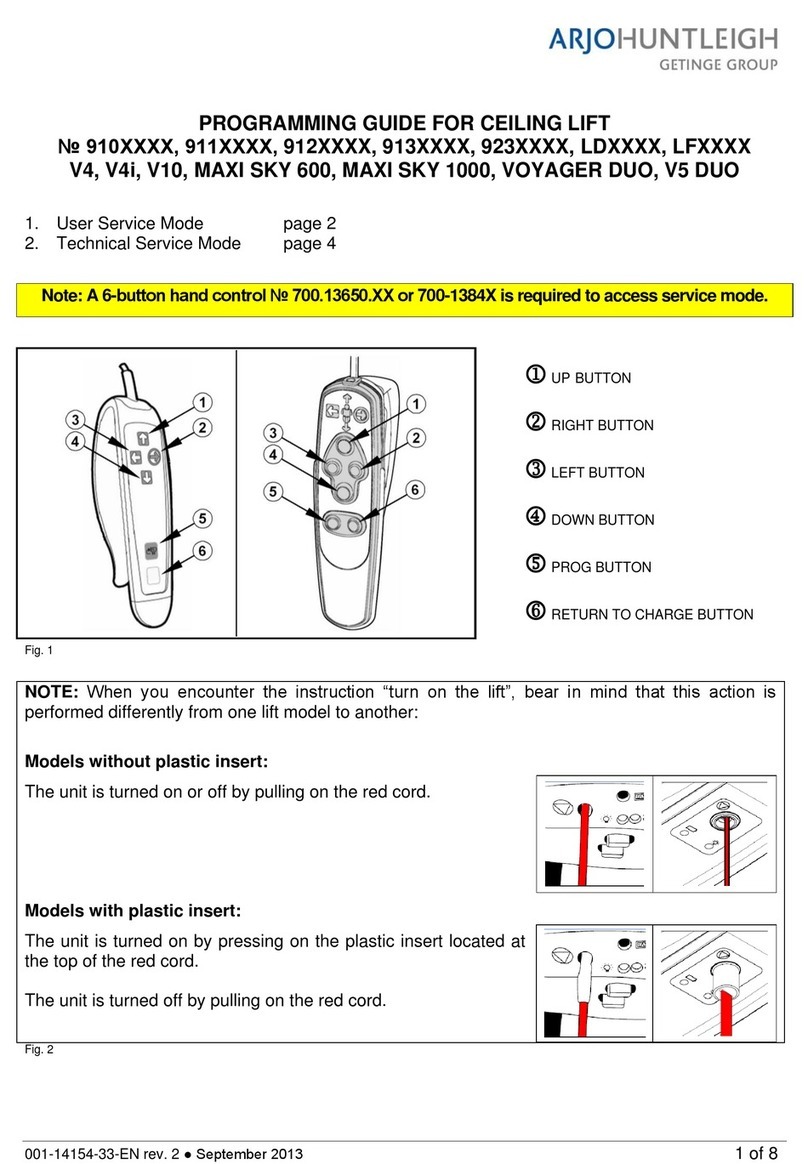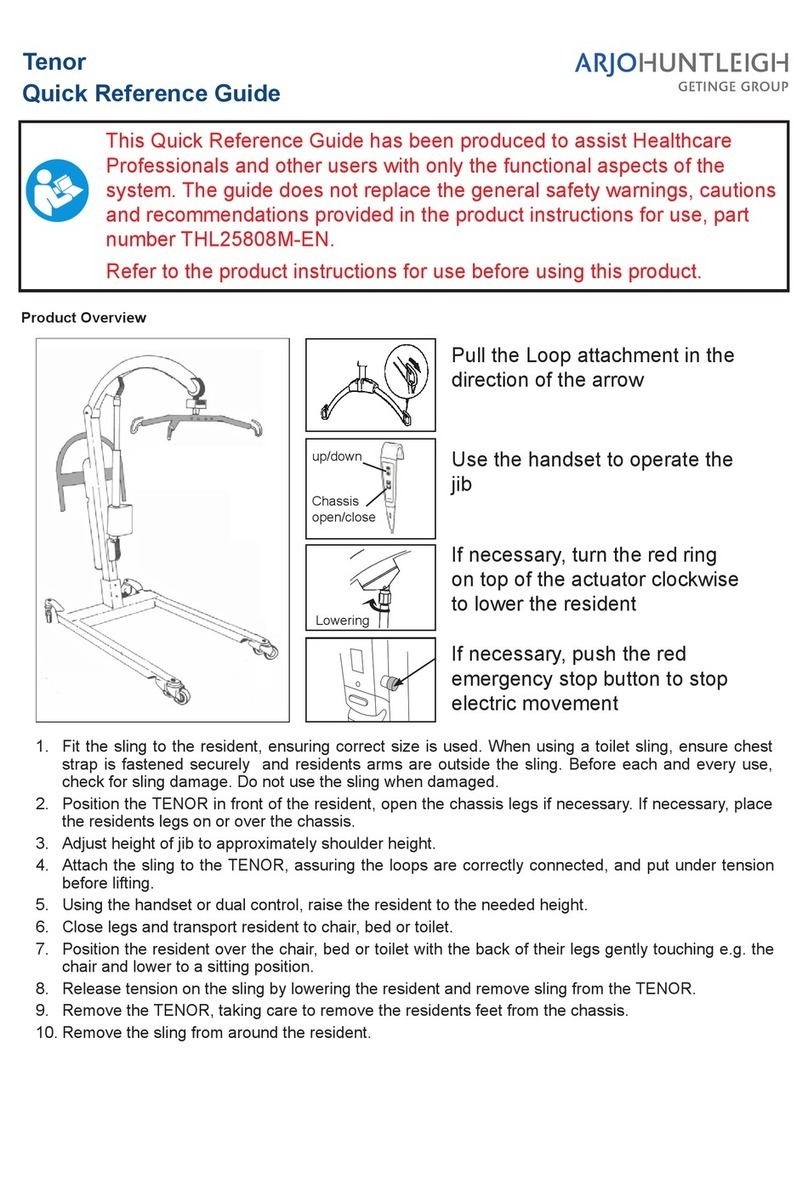
Safety Instructions
9
001.14150.33.EN rev. 17
Shock Prevention
• Do not touch or use a lift with bare
conductors or a damaged power cord.
Electrically live equipment can result in
serious injuries. If the lift or charger has any
exposed or damaged wires, contact your
local ArjoHuntleigh agent immediately.
• Do not splash or expose the device to water
or moisture.
Fire and Explosion Prevention
• Do not place or store the battery under
direct sunlight or near a heat source.
• Do not expose the batteries or battery
charger to flames.
• Do not use the charger in the presence of
flammable anaesthetic gases.
• Do not short circuit the battery terminals.
Human and Environmental Safety Practices
• Should the battery casing crack and cause
contents to come in contact with skin or
clothing, rinse immediately with plenty of
water.
• If contents come in contact with the eyes,
rinse immediately with plenty of water and
seek medical attention.
• Inhalation of the contents can cause
respiratory irritation. Provide fresh air and
medical attention.
• For recycling and disposal of the lift casette
or the batteries, the rules according to the
WEEE directive as well as local laws and
regulations must be followed. If not they
may explode, leak and cause personal
injury. When returning batteries, insulate
their terminals with adhesive tape.
Otherwise, the residual electricity in used
batteries may cause fire or explosion.
Please consider that failure to properly dispose of
this equipment and its parts according to local
regulations may constitute an infraction as well as
causing harm to the environment.
Battery and Battery Charger Safety Practices
• Do not expose the battery charger to water.
• Do not expose the battery connector to
water.
• To avoid bodily injury, do NOT crush,
puncture, open, dismantle or otherwise
mechanically interfere with the battery.
• Be careful not to drop the batteries.
• Only use the charger that has been
supplied with the equipment.
• Do not charge the batteries in an
unventilated area.
• The charger must not be covered or
exposed to dust.
Homecare Environment Considerations
WARNING: ArjoHuntleigh warns of possible
strangulation risks related to the lifting
strap, the hand control cable or the
emergency pull cord, and advises to take
necessary precautions to prevent these.
WARNING: This product contains small
parts that might present a chocking hazard
to children if swallowed.
CAUTION: Keep all components of the lift
clean and dry, and have electrical and
mechanical safety checks done as
instructed in the “Care and Maintenance”
section of this manual.
CAUTION: Excessive exposure of the hand
control to water (or other liquid) could cause
malfunction of the device.
WARNING: Before each use, make sure all
track end stoppers are in place and secured.
Absence of an end stopper could lead to
patient fall.
NOTE: Following the instructions is
important for the safe use of the battery.
WARNING: Do not operate the charger unit
with a damaged cord or if the unit has been
dropped or damaged.
Do not bend the power cord by force, or
place a heavy object on it. This will damage
the cord and may cause fire or electrical
shock.
WARNING: The Maxi Sky 600 is not intended
to be operated by children.
Serious injuries could occur.
NOTE: Cleaning actions are needed when
the Maxi Sky 600 is near animals. Pet hair
trapped inside the device (through the strap
opening) can reduce the product’s
performance.































